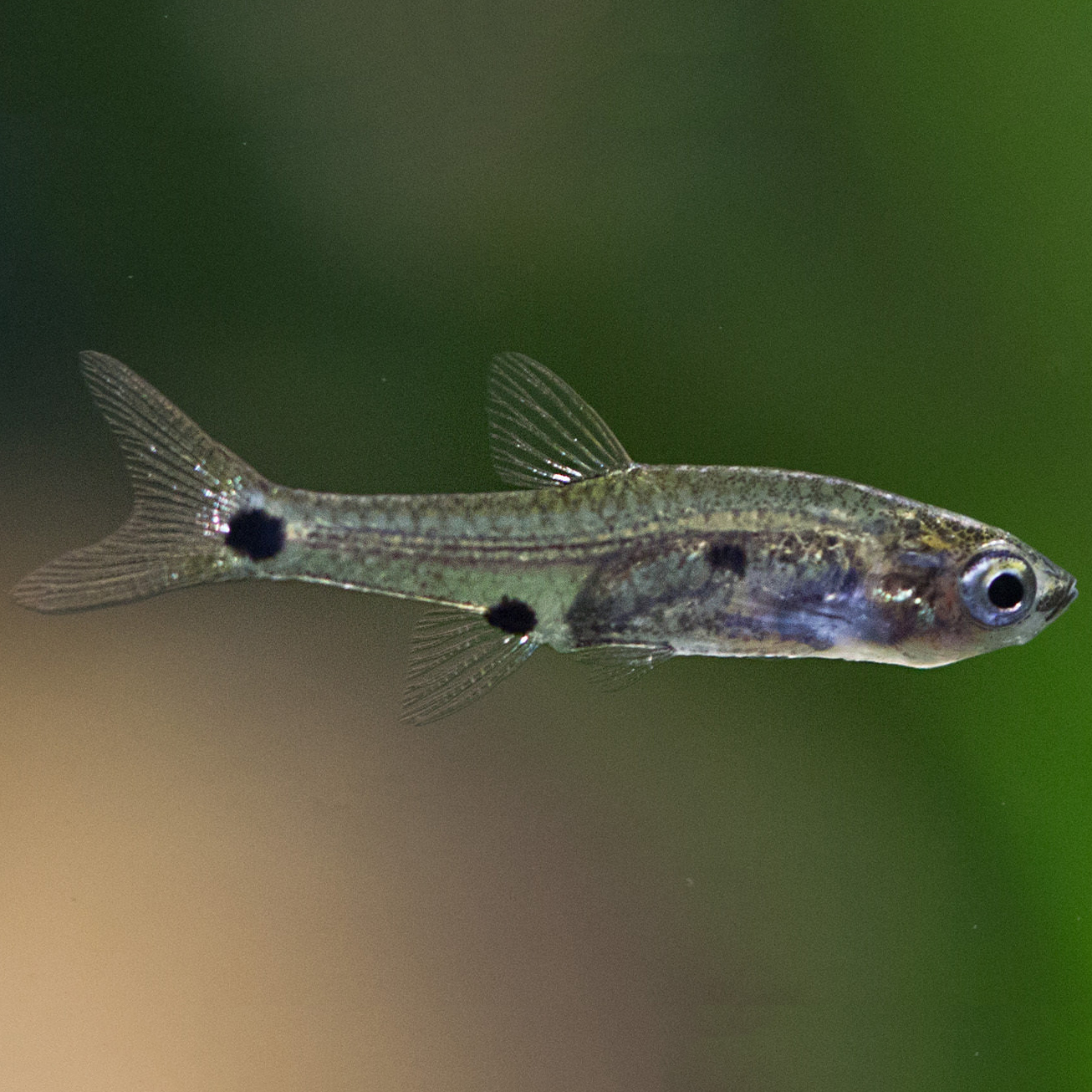Three-spotted Dwarf Minnow
Boraras micros
The Three-spotted Dwarf Minnow is a pretty nanofish and the smallest representative of its genus.
- peaceful nanofish from Asia
- pretty red color
- only grows to about 1.5cm long
1 in stock
 Delivery in a few working days
Delivery in a few working days
 Free shipping from €60 across Austria
Free shipping from €60 across Austria





Important data
Product description & details
The Three-spotted Dwarf Minnow is a rasboras, which has its distribution area in the Mekong Basin in Southeast Asia and can be found there in slow-flowing to stagnant waters with clear water and dense underwater vegetation. With a maximum body length of 1.5 cm, the Three-spotted Dwarf Minnow is the smallest species of the Boraras genus. Characteristic of this species are the 3 black spots, which are located in the middle of the body, above the anal fin and on the caudal fin stalk. The body color is silvery to slightly bluish and in the male it is bright orange-red in places.
Care in the aquarium
The Three-spotted Dwarf Minnow can be kept in an aquarium of 54 liters or more. This should have dense vegetation around the edges, which however leaves enough swimming space for this lively fish. Subdued lighting and a dark substrate not only ensure that the little shade-loving rasbora feels safe, but also bring out the great coloring particularly well. As a schooling fish, the Three-spotted Dwarf Minnow should also be kept with at least 10 members of its species. When in a school, this somewhat shy fish loses its fear quite quickly and shows off its most beautiful colors. Relatively soft and humic-rich (black) water with a temperature between 23 and 26°C is optimal. The pH should be slightly acidic and not go above 7.0. This extremely peaceful, tiny fish can be socialized with other peaceful, similarly small fish and dwarf shrimps.
Feeding
Omnivorous, the Boraras micros is not too picky, but in nature it feeds mainly on small insects and aquatic animals. Due to its small mouth, only very small or fine types of food can be fed. Small frozen and live food such as Artemia nauplii or copepods are preferred, but fine flake food is also accepted.
Sexual characteristics and breeding
Distinguishing the sexes is not too difficult with the Three-spotted Dwarf Minnow. The male differs from the female in its stronger coloring and slightly slimmer body. Breeding Boraras micros in an aquarium is possible. Soft, acidic water is ideal. The addition of humic substances, for example in the form of sea almond tree leaves, walnut leaves or alder cones, also prevents the eggs from becoming fungal. The willingness to spawn can be increased by changing the water with cooler water and giving more live food. As free spawners, females prefer to release their eggs between fine-feathered plants, where they are fertilized by the male. There is no brood care and there is a risk that the parents will eat their own eggs, which is why there should be a spawning grid or, better yet, a separate breeding tank. The fish larvae, which hatch after about 24 hours, are very small and can be fed with dust food and infusoria after the yolk sac has been consumed.





